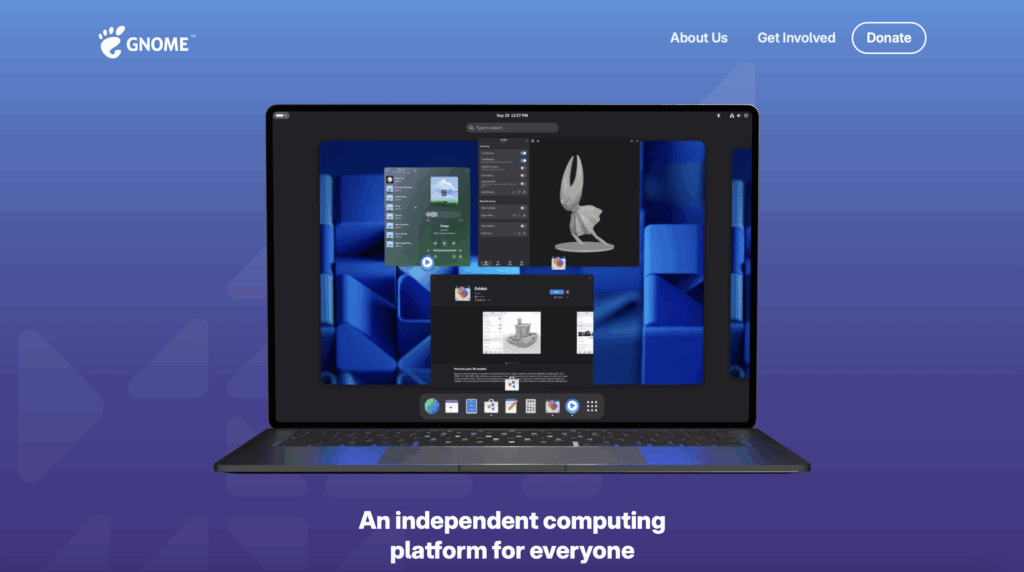The GNOME desktop environment is one of the most popular and polished interfaces available for Linux users, known for modern design, simplicity, and streamlined workflow. However, when it is paired with Arch Linux, GNOME provides a customizable and stable desktop environment for users.
This guide will walk you through everything that you need to know about installing and setting up Arch Linux GNOME.
Why Use Arch Linux GNOME?

GNOME provides a clean, modern, and intuitive user interface that mainly focuses on productivity and usability. On Arch Linux, it works even more seamlessly thanks to user control.
You get the latest GNOME updates as soon as they are released, which allows you to work with the latest developments. Additionally, Arch Linux gives you the right amount of flexibility to install only the features that you need, keeping the system lightweight and efficient while benefiting from GNOME full desktop capabilities.
Prerequisites for Installing GNOME on Arch Linux
Before you start to install GNOME, make sure that your Arch Linux system is fully set up and connected to the internet. You would ideally need:
- A working Arch Linux installation with a non-root user and sudo privileges.
- A stable internet connection.
- Pacman – the Arch package manager.
- Familiarity with command-line tools.
If you’re setting up GNOME on a minimal Arch installation, ensure you’ve installed essential components like base, linux, and linux-firmware.
Get exclusive access to all things tech-savvy, and be the first to receive
the latest updates directly in your inbox.
Updating and Preparing Your Arch Linux GNOME System
Before installing the desktop environment, you need to update your system to avoid issues at a later stage. Run this command:
sudo pacman -Syu
This command would sync your package database and update the installed packages to the latest version. If you are running Arch Linux with a virtual machine or a new setup, you might need extra utilities. Download them using:
sudo pacman -S vim networkmanager
Enable NetworkManager to ensure your internet connection works properly after boot:
sudo systemctl enable NetworkManager
sudo systemctl start NetworkManager
Installing the GNOME Desktop on Arch Linux
To install the GNOME Desktop, you can use the following command:
sudo pacman -S gnome
This would install the basic GNOME desktop environment along with all the important applications. If you need a better minimal setup, then only install the core GNOME packages.

sudo pacman -S gnome-shell gnome-control-center gnome-terminal nautilus
Once the installation is complete, you can enable and start the GNOME Display Manager (GDM) to launch the desktop environment automatically.
Enabling and Starting GNOME Display Manager (GDM)
Once GNOME is installed, the next step is to enable the GNOME Display Manager (GDM), which handles user logins and the graphical login interface.
Enable GDM so it starts automatically at boot:
sudo systemctl enable gdm
Then start it immediately without rebooting:
sudo systemctl start gdm
If everything is set up correctly, GDM will launch the GNOME login screen, allowing you to log into your new desktop environment.
sudo systemctl disable lightdm
Setting Up GNOME Extensions and Tweaks
GNOME Extensions and Tweaks allows you with full control over how your desktop will look and behave. Here is how you can set it up:
- Install the GNOME Tweaks tool by running
sudo pacman -S gnome-tweaks
This lets you adjust themes, fonts, startup applications, and more.
- Install the Extensions app (for managing GNOME Shell extensions):
sudo pacman -S gnome-shell-extensions
- Enable extensions support in your browser:
Visit extensions.gnome.org and install the browser connector using:
sudo pacman -S chrome-gnome-shell
Customizing the GNOME Desktop Environment
GNOME is highly customizable through the Tweaks and Extensions tools. Here are a few ideas that would help you tailor your desktop experience.
- Change the Theme:
Use the GNOME Tweaks to decide in between the light, dark, or custom themes. You can also install other popular themes, such as Adwaita-dark or Arc.
- Set a Custom Icon Pack:
Modify your system icons with GNOME Tweaks, Appearance, and then Icons.
- Configure Keyboard Shortcuts:
To customize your keyboard shortcuts, go to settings, keyboard, view, and then customize shortcuts for personalized hotkeys.
- Add Workspaces or Dock Customizations:
Use Dash to Dock or Dash to Panel extensions to change how the taskbar and workspace behave. You can also use this command below to install additional themes from the Arch User Repository (AUR) using Yay:
yay -S gnome-themes-extra
Common Issues and Fixes For Arch Linux GNOME
| Issue | Cause | Fix |
| GDM doesn’t start on boot | Conflicting or disabled display manager | Run sudo systemctl enable gdm –force and disable others like LightDM |
| Black screen after login | Missing GPU drivers or Wayland issue | Switch to X11 by editing /etc/gdm/custom.conf and uncommenting WaylandEnable=false |
| Extensions not loading | GNOME Shell version mismatch | Update extensions from extensions.gnome.org |
| No sound or input devices | PipeWire or PulseAudio misconfiguration | Reinstall audio packages: sudo pacman -S pipewire pipewire-pulse wireplumber |
| High CPU usage from GNOME Shell | Faulty extensions or outdated shell version | Disable unused extensions and update GNOME with sudo pacman -Syu |
Best Practices for Using Arch Linux GNOME
To make sure that your GNOME desktop stay stable, fast, and efficient on the Arch Linux, follow these best practices:
- Keep Your System Updated Regularly:
Arch Linux has frequent updates, so the system is always up to date. Run this command for rolling updates:
sudo pacman -Syu
Regular updates help prevent compatibility issues between GNOME and system libraries, allowing it to run smoothly.
- Avoid Unnecessary Extensions
While GNOME extensions help enhance customizations, too many of those can cause slowdowns or crashes. Stick to the necessary ones and update them regularly.
- Use Lightweight Themes and Icons
Use minimal themes, such as Adwaita-dark or Arc, help maintain performance without visual clutter.
- Enable Automatic Login (Optional, for Single Users)
If you are the only user on the system, you can enable auto-login GDM’s configuration file (/etc/gdm/custom.conf) for convenience.
- Monitor System Resources
Regularly monitoring system resources like gnome-system-monitor or htop to keep an extra eye on the CPU and memory usage, especially after installing new extensions.
- Backup Your GNOME Configuration
Save the settings and customizations using this code:
dconf dump / > gnome-backup.conf
Restore it later with:
dconf load / < gnome-backup.conf
- Leverage GNOME Tweaks for Workflow Optimization
Configure hot corners, keybindings, and workspace layouts using GNOME Tweaks to make your workflow more efficient.
Conclusion
Installing and setting up Arch Linux GNOME combines the best of the two: the usability of GNOME and the flexibility of Arch. Using proper configuration and maintenance, you can enjoy a stable and responsive desktop tailored to the workflow.
FAQs
How much space does Arch Linux GNOME require?
A full GNOME installation typically requires around 2–3 GB of disk space, depending on whether you install the gnome-extra package.
How do I customize Arch Linux GNOME?
You can customize GNOME using GNOME Tweaks and Extensions. Install them with:
sudo pacman -S gnome-tweaks gnome-shell-extensions
Is GNOME suitable for low-end systems on Arch Linux?
GNOME is feature-rich and may use more resources than lightweight environments like XFCE or LXQt. For older hardware, you may prefer those instead.



